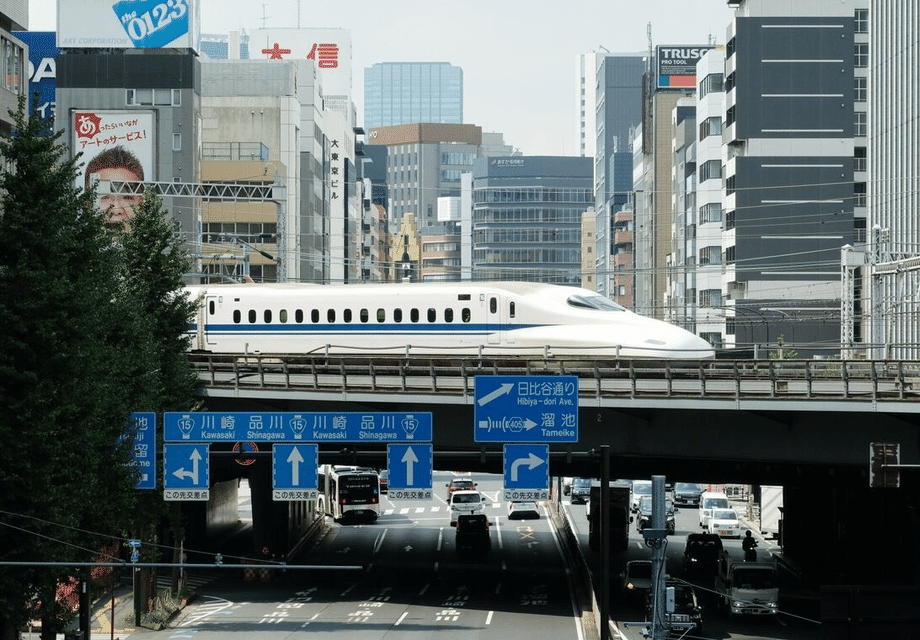Why a unified booking system matters now
Japan is preparing a major change to the way people book bullet train travel. Four Shinkansen operators will integrate their online reservation systems into one interface, ending the need for separate accounts and passwords across different regions. Central Japan Railway, East Japan Railway, West Japan Railway, and Kyushu Railway will let riders plan and purchase multi segment trips under one login. This shift targets a common pain point for trips that cross operator boundaries, such as a journey from Sendai to Nagoya, which today requires two separate bookings on different platforms. The companies aim to make the process simpler and to lift the share of digital reservations, which currently account for about half of all bookings.
The rollout will come in stages. JR Central and JR West plan to launch the integrated platform within fiscal 2026 (starting April 2026). JR East and JR Kyushu will join sequentially from fiscal 2027. Once fully live, travelers will be able to manage complex itineraries, compare trains, and secure seats across long distances without switching websites or apps. That convenience matters as Japan welcomes more international visitors and domestic travelers mix work and leisure trips with tighter schedules. A JR West official framed the move as a customer centered step, saying the railway companies are working together to improve service from the rider perspective.
JR firms are joining hands to improve services from the customer’s perspective.
The plan fits a broader drive to modernize digital rail services. Shinkansen ticketing has improved in recent years with mobile reservations, QR based boarding on some lines, and expanding payment options at gates. Yet differences among regional systems have remained a source of confusion, especially when a single journey crosses operator areas. A unified booking experience promises fewer hurdles and a more predictable process for both Japanese riders and visitors from abroad.
What will change for passengers
Riders will see practical upgrades once the integrated platform is in place. The core idea is simple, one login for trips across the participating Shinkansen networks. Behind that promise are several tangible changes that should make planning easier and less time consuming.
- One account for four operators, no more juggling multiple usernames and passwords
- Single interface to search routes, pick trains, and reserve seats across regions
- Ability to book multi segment itineraries, such as Tohoku to Tokaido connections, in one go
- Consistent user experience, including language support and digital ticket options where available
- Clearer seat maps and fare details across different services and classes
- Streamlined changes and cancellations in one place for itineraries that include more than one operator
- Broader coverage that aligns with the nationwide Shinkansen network operated by the four companies
For many travelers, the most helpful change will be the elimination of platform switching in the middle of the booking process. Families and groups connecting across regions can secure seats together more easily. Business travelers can manage long itineraries in a single view, reducing the risk of mismatched segments and timing errors.
How bookings work today across JR operators
To understand the benefit, it helps to know how Shinkansen booking currently works. After the breakup of Japan National Railways in 1987, regional companies took over operations. That structure brought investment and innovation, yet it also led to digital fragmentation. Riders heading west from Tokyo on the Tokaido and Sanyo lines typically use one platform. Those traveling north or northwest on the Tohoku, Joetsu, and Hokuriku lines use another. When a trip crosses the boundary between these regions, the customer often has to create two reservations in sequence, each with its own account and payment record.
Seat products and fares also vary. Ordinary cars, Green Car, and premium classes offer different levels of comfort. Reserved and non reserved seating both exist, with reserved seats recommended on long rides and during busy periods. Fares combine a base ticket with a Shinkansen supplement, and seasonal surcharges may apply. The integrated system will not change the core fare structure or seat classes. It will change how customers search, compare, and complete a purchase across multiple operators in one place.
Digital boarding already exists in parts of the network. On the Tokaido, Sanyo, and Kyushu Shinkansen, many riders use QR codes at the Shinkansen gates, often without collecting a paper ticket. On other lines, policies vary by service, and some reservations still require ticket pickup at machines. The new unified platform is expected to bring a more consistent experience for account creation and payment, while gate technology and ticket delivery methods will continue to evolve line by line.
Timeline and rollout plan
The launch will arrive in phases to keep services stable. JR Central and JR West expect to switch on the integrated booking within fiscal 2026. In Japan, the fiscal year runs from April to March, so the target window begins in April 2026. JR East and JR Kyushu will join from fiscal 2027, with a sequential approach designed to maintain reliability as systems are linked.
Riders can expect a familiar look and feel from day one, with added capability for cross operator itineraries. Seats and fare options will remain the same, and customers who prefer station counters or ticket machines can continue to use them. The companies will provide detailed guidance on account migration, supported payment methods, and how to handle existing reservations once the launch dates approach.
What to expect at launch
Early users should see a cleaner search flow, fewer steps for multi leg trips, and clearer prompts for transfers across operator boundaries. Language support for visitors will be a focus, and customer service information will be easier to find across the participating networks. Refunds and changes made through the integrated account should propagate across the linked segments, reducing the need to repeat steps with two different systems.
Digital ticketing and gate access are evolving
The booking unification sits alongside other digital upgrades around ticket gates and boarding. Contactless transit cards are long established in Japan, and several railways have introduced contactless credit card access on conventional lines. On the Shinkansen, QR code boarding is common on some routes. The official boarding guide for the Tokaido, Sanyo, and Kyushu lines explains how this works at dedicated Shinkansen gates and what riders need to carry for seat checks onboard.
Gate technology is moving forward in other ways as well. East Japan Railway plans a trial of facial recognition gates on the Joetsu Shinkansen between Niigata and Nagaoka. The project, undertaken with partners including JR East Mechatronics and device makers, will test whether walk through gates can offer smooth access for riders with baby carriages or large luggage. Panasonic Connect, a key participant in the trial, described the aim this way in a project announcement:
The goal is to examine the practicality of walk-through ticket gates.
These experiments point to a gradual shift toward faster, less intrusive gate experiences. A successful model could complement unified bookings by letting riders complete the full journey, from reservation to boarding, with fewer steps and fewer points of friction. The integrated platform will not determine gate hardware choices, yet a shared account and unified digital tickets can help the entire set of upgrades work together.
Tourism, business travel, and the Japan Rail Pass
International visitors often rank the Shinkansen as a trip highlight. They also routinely run into complexity when crossing operator areas online. A single booking account reduces that complexity and should reduce mistakes during peak travel months. Families will find it easier to secure adjacent seats across the entire itinerary. Business travelers can finalize plans faster, especially when a meeting schedule shifts and segments need to be changed on short notice.
Rail passes remain a distinct topic. The Japan Rail Pass and regional passes offer unlimited travel within set periods and areas, with rules that differ from point to point tickets. The integrated booking platform will be about reservations and payments for regular tickets, not pass eligibility. Travelers using a Japan Rail Pass still need to choose trains that accept it. The fastest Nozomi and Mizuho services are not covered by the pass. Pass holders can continue to reserve seats at station machines or counters, and in many cases online on the relevant regional platform where pass seat reservations are supported.
Payments, language, and mobile convenience
Payment options have expanded across Japanese railways in recent years. Contactless credit card readers are appearing at some gates, and mobile wallets are common at shops and vending machines inside stations. Messaging apps are also entering the picture. Starting October 4, 2025, travelers will be able to book Shinkansen tickets for the Tokaido, Sanyo, and Kyushu lines inside the Line app, pay with PayPay, and receive a QR code for boarding. That experiment shows how mobile first services can reduce entry barriers for occasional riders who do not want to create a new account or learn a new app. The unified booking platform takes a broader step, creating a single account for the four Shinkansen operators and setting a baseline for future mobile friendly features.
Language support is likely to improve as the shared platform matures. Today, English interfaces exist on current sites, yet phrasing and payment flows can differ from page to page. A single system encourages consistent design, clearer guidance on luggage rules, and stronger error messages when a seat choice is not available. Travelers should also see simpler instructions for transfers between Shinkansen and conventional lines.
Challenges and what still needs answers
Integration at this scale requires careful coordination across account data, payments, and customer service. Each railway has its own rules for changes, cancellations, and refunds. The integrated platform will need a clear way to handle an entire itinerary if only one segment is affected by a delay or a rider wants to change a single leg. Payment settlement among the companies must be accurate and fast in the background, without surfacing complexity to the customer.
Privacy and security also matter. A unified account brings more convenience, and it concentrates customer data. The railways will have to maintain strong controls for data sharing, consent, and storage. Riders will expect clear notices about what is shared across the companies, especially for contact information and travel history used for customer support.
Some riders will still prefer station counters and ticket machines. Integrating online services does not remove offline options. Staffed ticket offices remain important for travelers who want in person help, for complex group bookings, and for customers who cannot or do not want to use online payments. Accessible design will also be a test, since a single platform must work well for first time visitors, older riders, and frequent commuters with very different needs.
What to Know
- Four Shinkansen operators will unify online bookings under one login
- JR Central and JR West target fiscal 2026 for the first launch
- JR East and JR Kyushu plan to join sequentially from fiscal 2027
- Multi segment trips across operator areas will be bookable in one flow
- Online reservations currently make up about 50 to 60 percent of bookings
- QR code boarding is already in use on several Shinkansen lines
- JR East will test facial recognition gates on the Joetsu Shinkansen in 2025
- Japan Rail Pass rules do not change, and the fastest services are not covered
- Station counters and ticket machines will continue to serve riders who prefer them




